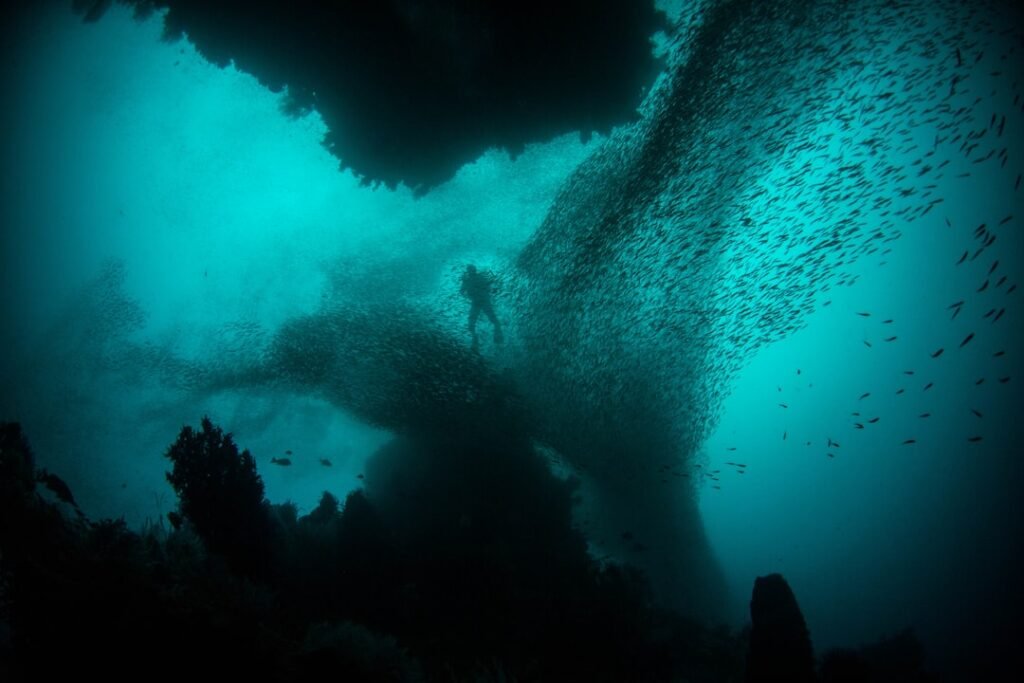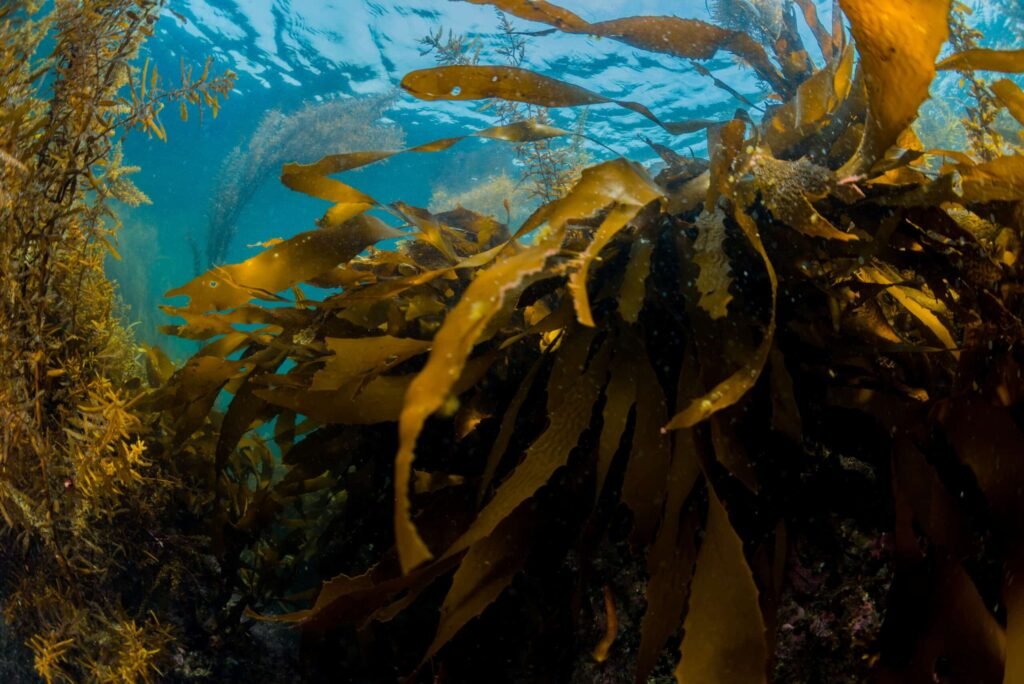Picture yourself standing at the edge of an abyss so deep that if you dropped Mount Everest inside, it would vanish without a trace, swallowed by crushing darkness. The deepest places on our planet lie not in any mountain range or desert crater, but beneath the waves of our oceans. These underwater trenches represent the final frontier of exploration on Earth, holding secrets that challenge everything we thought we knew about life itself.
While we’ve mapped more of the moon’s surface than our own ocean floor, scientists continue pushing into these alien depths. The discoveries they’ve made will leave you speechless. Let’s dive into the most extreme underwater trenches and what we’ve found there.
The Mariana Trench: Earth’s Ultimate Abyss

The Challenger Deep, the deepest known point of the Mariana Trench, reaches approximately 10,984 meters (36,037 feet) below sea level. Imagine the crushing force of over a thousand times normal atmospheric pressure. This is more than 1,000 times the pressure felt at sea level, or the equivalent of having 50 jumbo jets piled on top of a person.
The depression is named after the British Royal Navy survey ships HMS Challenger, whose expedition of 1872–1876 first located it, and HMS Challenger II, whose expedition of 1950–1952 established its record-setting depth. What’s truly mind-boggling is that despite these hellish conditions, life doesn’t just survive there. A carpet of bacteria breaks down dead sea creatures and plankton to recycle nutrients. We’ve only scratched the surface of what thrives in the deepest regions of the ocean.
The trench stretches over 1,580 miles long, making it five times longer than the Grand Canyon. The Mariana Trench is part of the Izu–Bonin–Mariana subduction system that forms the boundary between two tectonic plates. In this system, the western edge of one plate, the Pacific plate, is subducted beneath the smaller Mariana plate that lies to the west.
Tonga Trench: The Southern Hemisphere’s Deepest Secret

The Tonga Trench is the second-deepest oceanic trench in the world and the deepest in the Southern Hemisphere. The trench’s deepest point is Horizon Deep, situated 10,820 meters (35,498 feet) below sea level. The point is named after the research vessel Horizon, which discovered it in December 1952.
This underwater monster stretches roughly 2,500 kilometers with a width of about 80 kilometers. It extends from New Zealand’s North Island to the islands of Tonga. Tonga Trench formed due to tectonic plate movements that led to a series of volcanoes. Scientists state that the plate movements caused the Pacific plate subduction by the Tonga plate.
The deepest point in this tremendous trench is called Horizon Deep. Horizon Deep is one of the most dramatic deep ever seen, as it has profound slopes and ridges that are relatively steeper. Tonga Trench is only 300 feet shallower than the Challenger Deep, and the water temperatures are approximately 1.1 degrees Celsius. The trench influences seismic activity throughout the region, contributing to earthquakes and tsunamis.
Philippine Trench: The Western Pacific’s Hidden Giant

The Philippine Trench has a width of 30 km and reaches a depth of 10,540 m (34,580 ft) at its deepest point, Emden Deep. Emden Deep is also sometimes known as the Galathea Deep or Galathea Depth. Also known as the Mindanao Trench, this underwater canyon stretches over 1,320 kilometers through the Philippine Sea.
The Philippine Trench covers 30 km in width, 1,320 km in length and is the most renowned trenches located in the Philippine Sea. Its formation resulted from the Eurasian Plate collision with the smaller Philippine Plate. The trench’s prominence is also because it was known to be the deepest trench by the 1970s.
Scientists have made remarkable discoveries of deep-sea fish in various Pacific trenches, including juvenile snailfish found at record-breaking depths that have stunned marine biologists who never expected vertebrate life to survive at such crushing depths.
Kuril-Kamchatka Trench: Russia’s Underwater Frontier

The Kuril-Kamchatka Trench (also known as the Kuril Trench) is the fourth deepest ocean trench in the world. It lies in the southeast direction of Russia’s Kamchatka plateau in the Pacific Ocean. The trench runs parallel to the Kuril Island chain and meets the Japan Trench at its southern end. This trench is approximately 2,900 km (1,801 mi) long with a depth of 10,542 meters (34,586 feet) at the deepest point.
The Kuril-Kamchatka Trench, located in the northwest Pacific Ocean, stretches over 2,500 kilometers (1,553 miles). The geomorphological feature is formed by the Pacific Plate subducting beneath the smaller Okhotsk Plate, a process that has been shaping the Earth’s surface for millions of years. The constant grinding of these massive plates creates intense seismic activity.
The Kamchatka Trench marks the beginning of a series of trenches that extend from the Bering Sea to the Philippines. This trench system represents one of the most tectonically active regions on Earth, regularly producing powerful earthquakes that ripple across the Pacific Rim.
Kermadec Trench: New Zealand’s Deep Ocean Laboratory

The Kermadec Trench lies to the northeast of New Zealand’s North Island and is a continuation of the Tonga Trench in the north. It is the fifth deepest trench in the world, reaching a maximum depth of 10,047 meters (32,962 feet) at its lowest point. The Kermadec Trench is approximately 1,200 km (746 miles) long and is part of the Tonga-Kermadec arc in the Pacific Ocean.
Scientists have made remarkable biological discoveries here. A 2014 scientific expedition uncovered a diverse range of life in the trench, including seven fish species (with nine types of snailfish), numerous amphipods, three shrimp species, and various other invertebrates.
However, the trench has also claimed its victims. A few years ago, the Kermadec Trench was in the news after the Nereus, an unmanned research submarine, imploded because of the high pressure at a depth of 9,990 meters while exploring the Kermadec Trench. In May 2014, while exploring the Kermadec Trench at a depth of 9,990 meters (6.2 miles), Nereus imploded under immense pressure. This sobering reminder shows just how hostile these depths truly are.
Japan Trench: The Ring of Fire’s Deepest Point

The Japan Trench is located east of the Japanese islands and forms part of the “Ring of Fire” in the North Pacific Ocean. Its volcanic activity makes up the bulk of the “Ring of Fire” in the northern Pacific Ocean. This trench played a devastating role in recent history.
It’s a critical component of a vast, interconnected trench system that stretches from the Kuril Trench, down through the Japan Trench, and ultimately connects to the Mariana Trench. This system marks a dynamic zone where the Pacific Plate subducts beneath other tectonic plates. It also features unique seamounts – underwater mountains like the Daiichi-Kashima Seamount, which is gradually sinking into the trench floor.
The 2011 Tohoku earthquake and tsunami originated from this trench system, demonstrating the incredible forces at work beneath the waves. The snailfish Pseudoliparis belyaevi from 7703 m in the Japan Trench represents one of the deepest-living vertebrates ever discovered, showing life’s remarkable ability to adapt to extreme conditions.
Puerto Rico Trench: The Atlantic’s Deepest Mystery

The deepest part of the Atlantic Ocean is the Puerto Rico Trench, reaching a staggering depth of approximately 8,605 meters (28,232 feet) at a point known as the Milwaukee Deep. This abyssal plain lies within the trench, located about 120 kilometers (75 miles) north of Puerto Rico and just south of the border between the Atlantic and Caribbean Seas.
The Puerto Rico Trench is a deep oceanic subduction zone that runs parallel with the northern coasts of Puerto Rico and the Dominican Republic. It is the deepest place in the Atlantic Ocean with a maximum depth of approximately 8400 m. Discovered by the HMS Challenger Expedition in 1875.
In 1964, the ocean floor of the Puerto Rico Trench was first explored by the French bathyscaphe Archimède. Remarkably, No manned expeditions have reached the absolute bottom of the Milwaukee Deep, although remotely operated vehicles (ROVs) and autonomous underwater vehicles (AUVs) have explored the area. No manned missions have reached the Milwaukee Deep since.
Life in the Abyss: Discoveries That Defy Belief

The most shocking revelation from these deep trenches isn’t their depth, but what’s living there. Their work identified over 7,000 microbe species, nearly 90 percent of which had never been documented before. Recent Chinese expeditions to the Mariana Trench have revolutionized our understanding of deep-sea life.
The hadal snailfish, with delicate fins and translucent body, roams the dark and freezing waters. Giant shrimp-like creatures up to a foot long scavenge fallen debris, including wood and plastic, and transparent eels with fish-like heads hunt prey. Setting the ultimate record at 8,143 meters was a completely unknown variety of snailfish, which stunned scientists when it was filmed several times during seafloor experiments. The white translucent fish had broad wing-like fins, an eel-like tail and slowly glided over the bottom.
The microbes likely represent the deepest chemosynthetic community ever discovered, feeding off the molecules released by geologic processes more than 6.5 miles beneath sea level. “The discovery of this putative microbial ecosystem thriving on chemosynthesis in the deepest, darkest, highest pressure region of our ocean serves as a guide for the potential habitability within the ocean of Europa.” These findings suggest life might exist on Jupiter’s moons.
Although many of the microorganisms died when they were brought up to the surface – after all, the creatures are adapted for the high pressure and low temperature of the ocean floor – the finding was confirmed: Cores from the Mariana Trench had much higher densities of bacterial cells than those from the reference site. Life down there isn’t just surviving, it’s thriving at densities ten times greater than shallower depths.
Conclusion

These deepest places on Earth continue to surprise scientists with their abundance of life and geological secrets. Despite the pioneering research that has taken place in the Mariana Trench, it remains largely unexplored. This is true for the rest of the ocean too. Scientists believe that humans have only adequately explored around eight per cent of the world’s oceans.
The creatures and microbes thriving in these crushing depths could hold keys to understanding life’s origins and even point us toward life on other worlds. From bacteria that feast on rock chemistry to fish swimming at pressures that would crush a human instantly, these trenches prove that life finds a way in even the most impossible conditions. What do you think about these incredible discoveries lurking in Earth’s deepest places?

Hi, I’m Andrew, and I come from India. Experienced content specialist with a passion for writing. My forte includes health and wellness, Travel, Animals, and Nature. A nature nomad, I am obsessed with mountains and love high-altitude trekking. I have been on several Himalayan treks in India including the Everest Base Camp in Nepal, a profound experience.




